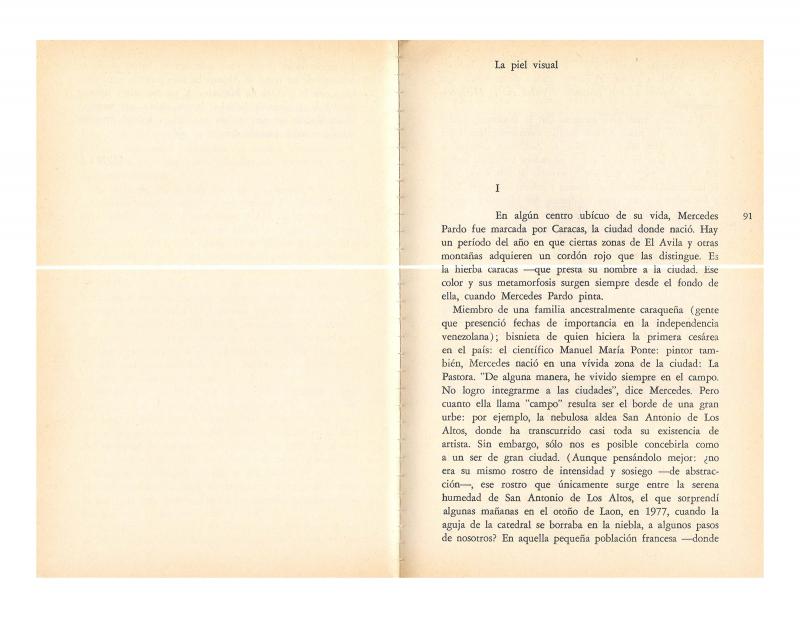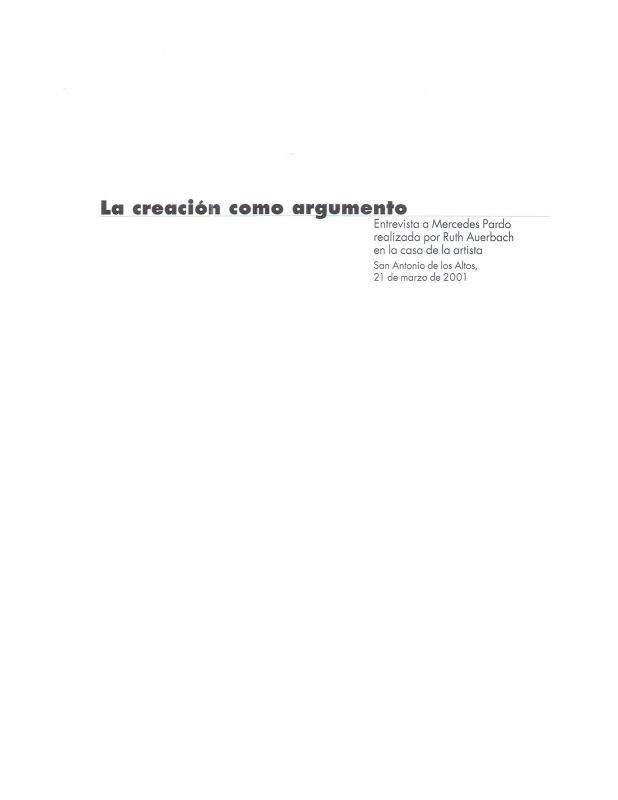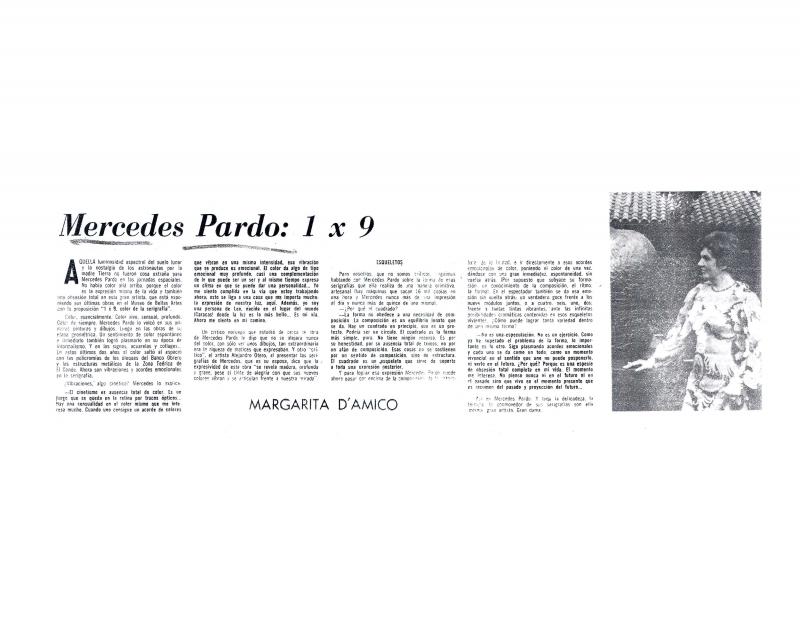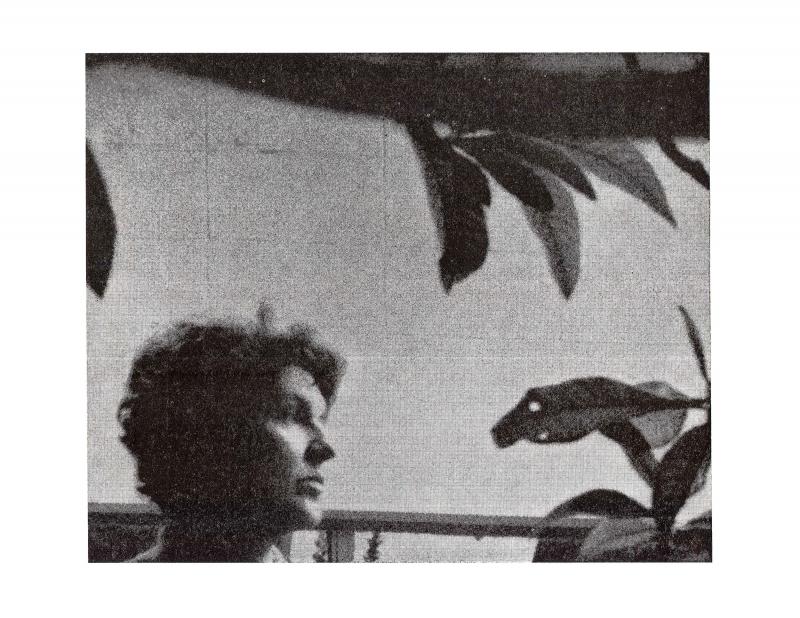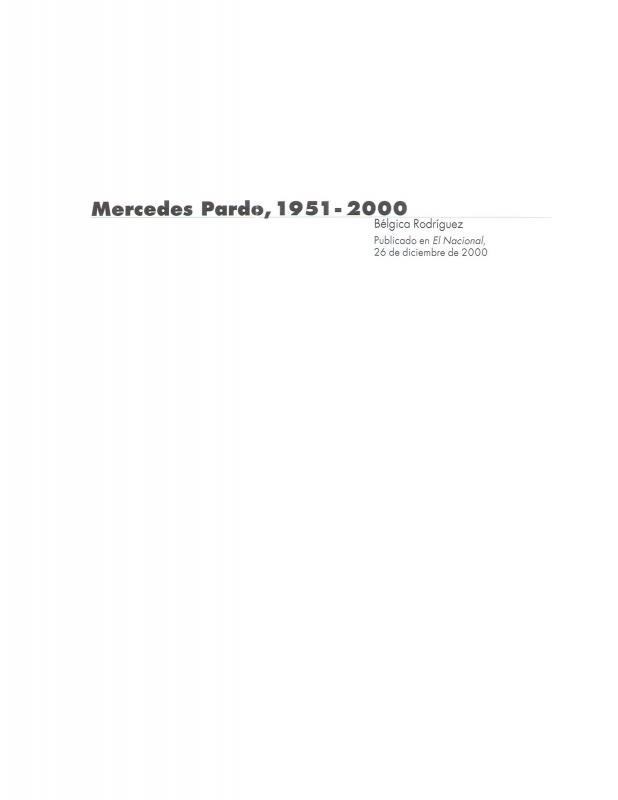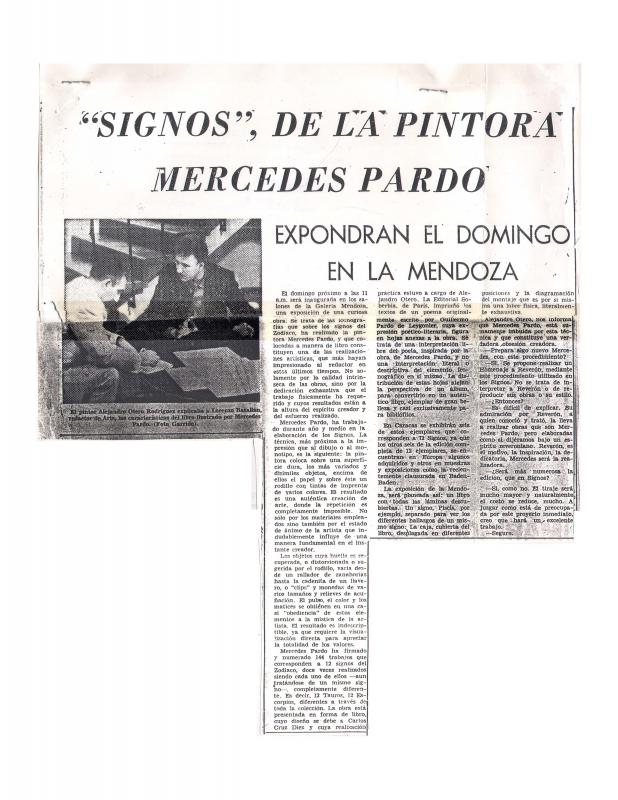José Balza (b. 1939) is an emblematic writer of Venezuela and of Latin America as a whole; his work has been translated into a number of languages. His texts on artist Mercedes Pardo (1921–2005) are significant due to their literary quality, as well as to his friendship with the artist whose work he closely followed starting in the seventies. Balza’s text takes a sensitive and poetic approach to Pardo’s work and the images that he chooses to illustrate it are well chosen. The text provides information on the Signes series (1961–63), which is atypical within Pardo’s production: the artist is seen basically as “the great colorist” of Venezuelan art and that series is bound to the Informalism that emerged in Venezuela in the early sixties.
Significantly, this essay also discusses as well traditions that relate to the way in which contemporary artists operate. Balza asserts that Mercedes Pardo has foregone three supports (or approaches) innate to the artist in these times: figuration, illustrative skill that has weakened abstract art, and composition akin to conventional architecture.
[For another text on Mercedes Pardo by Balza, see “La piel visual” at the ICAA digital archive (doc. no. 1157222). For texts on Pardo by other authors, see interviews by Ruth Auerbach, “La creación como argumento” (doc. no. 1143060) and by Margarita D’Amico, “Mercedes Pardo: 1 x 9” (doc. no. 1155959); Alejandro Otero, “Mercedes Pardo: color de la serigrafía” (doc. no. 1143176); Roberto Guevara, “Color y módulos en Mercedes Pardo” (doc. no. 1155991); Bélgica Rodríguez’s article, “Mercedes Pardo: 1951–2000” (doc. no. 1143027); and Lorenzo Batallán, “‘Signos’ de la pintora Mercedes Pardo” (doc. no. 1155975).]

